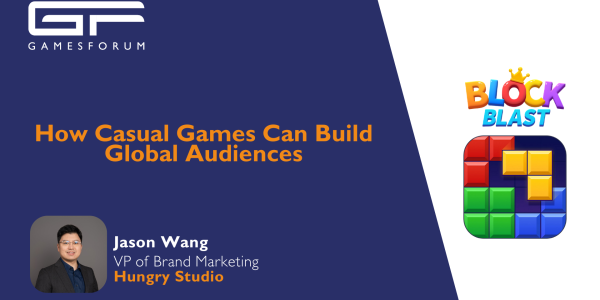Crash Bandicoot: On the Run never hits full pace

Crash Bandicoot: On the Run by King is the endless runner starring PlayStation’s furry mascot from the PSX era. Mad scientist Neo Cortex is back with ambitions to take over the world, and it falls to Crash Bandicoot and his sister Coco to foil his plans…again.
It’s hard to imagine any video game character from the 90s more suited to the endless runner genre than Crash Bandicoot. While Mario and Sonic experimented more and more with open worlds, Sony’s wild-eyed marsupial has spent almost his whole career crashing and spinning through linear gauntlets of deadly traps and bottomless pits. The only difference is that in On the Run, those stages are endless.
 Step back into Crash's running shoes!
Step back into Crash's running shoes!Well, that bit about the endless stages isn’t entirely true. While all the typical elements of an endless runner are here -- the three-lane corridor setup, jumping and sliding to avoid obstacles and holes, switches that dynamically change level layouts -- each stage in the main campaign has a definite end marked by a boss battle.
Once you’ve defeated a boss, Crash is teleported back to his home where he can choose the next stage to jump into or craft more vials of volatile liquids. Here’s where the “endless” bit comes in; crafting requires raw materials which can only be obtained by running through special island stages. These island stages are truly endless, though you’ll occasionally encounter paths that will allow you to end your run and return home, if you choose to do so.
As a Crash Bandicoot game, On the Run fits right in with the rest of Crash’s library of titles. Developers King nailed the cartoony aesthetic of the original, from the spinning and jumping animations to the little victory dance Crash performs at the end of a stage. The controls are responsive and intuitive, and there’s a surprising level of verticality to the way levels are designed. It’s clear to see that a lot of attention and detail went into making Crash Bandicoot: On the Run look and feel like a genuine console Crash title.
Bringing Crash to Mobile
 That Classic Crash Bandicoot Look
That Classic Crash Bandicoot LookBut On the Run isn’t a console title; it’s a mobile game. That means some compromises had to be made to make a Crash-style game playable on a touch screen.
The platforming, for instance, is much simpler than you might remember from the old PlayStation days. You can hop between lanes, tap to jump, or swipe down to slide beneath obstacles. The series’ famous pixel-perfect jumps and carefully-timed hops are nowhere to be found here simply because it would be unreasonable to expect a touchscreen device to provide the same precision of control as a controller.
Yet, while there’s sound reasoning for why King lowered the overall difficulty of the platforming, they’ve taken it too far in the other direction. The best endless runners become progressively harder the further you run. However, Crash Bandicoot: On the Run never gets harder or even easier; you just kind of keep going until you’re tired. So, despite solid mechanics and great visuals, it didn’t take long before I started eyeing the other runners in my library in search of something a bit more challenging.
On the Run would have also benefited from a lot more randomization, because it currently suffers from an extreme lack of variety in its stage design. Yes, you spend much of your time running forward in the mainline Crash games, but you also get the occasional 2D platforming or Indiana Jones-style boulder racing sections to spice things up. Currently, there isn’t much to differentiate a jungle level from a snowy level, other than the obvious palette and texture swap. And once you’re a few hours in, you start to identify the game’s repeating sections as you run through the same layout for the third and fourth times.
As is typical of free-to-play mobile titles, Crash Bandicoot: On the Run requires a lot of grinding. You need to craft vials to play stages of the game’s main campaign, and vials are crafted using materials collected by running through the game’s four island levels. As you get deeper into the game, you’ll find yourself spending more and more time on the island levels, and much less time progressing through the game’s story.
But since On the Run is an endless runner, the long grinds here work where they wouldn’t in other titles. In some games, the process of farming
means either repeating some mundane task for hours or waiting days before claiming materials; in Crash Bandicoot: On the Run, you farm by playing more of the game. It’s a soft “energy” system that locks you out of the main campaign, but still lets you enjoy the game you downloaded. Brilliant.
Crash Bandicoot Monetisation Model
 Customise your Crash through skins
Customise your Crash through skinsThe game features an in-game shop that sells packs of crafting materials and Purple Crystals, the game’s premium currency which can be spent on skins. Skins provide you with different bonuses, like an extra Aku Aku mask that saves you from dying if you get hit by a projectile. The skins aren’t necessary to progress in the game, and grinding is just as fun as playing the campaign, so raw materials aren’t vital to enjoying On the Run.
Crash Bandicoot: On the Run is a game that feels like it’s a few tweaks away from greatness. It gets points for making farming for materials as fun as the main campaign, and the monetization model is devoid of pay-to-win features, making it a title that’s friendly for free players. However, despite responsive controls and incredible style, the overly simplistic platforming and repetitive stage sections make it a middling runner that gives us the tamest version of Crash I’ve seen in awhile.
By Andi Nuruljihad for Gamesforum











